This has been such a looong holiday! And that's one nice thing about Malaysia--we get so many public holidays.
We were home playing Scrabble for the first time in don't-know-how-many years (tricked Hub and Wey to play with me, citing pre-dementia and the need for brain exercise), when Y called and said we better rush to her friend's
durian farm if we want some King Of Fruits. The direction was to go up the hill in Bukit Padang, then down and turn right at the junction, then go on the road for about 5 minutes until a small road on the left with a sign that says Jalan Lomudu, I think, and Dog Training Kennel. Just opposite to Country Shangri-la (I think), a new housing. Go on the small sealed road, past the dog training center on the left, and after less than 2 minutes the road will fork left and right. Take the left road that goes downhill and you will soon see a sign that says "Private Property" on the barbed gate. That's where Josie, the owner, will meet you if she's there. Her mobile no is 019 820 7941. On week days she's a busy lawyer so call her on weekends. Her
durians are expected to last until end of Oct but don't count on my estimation. Hurry there before the fruits are gone. It's crazy that we have a durian farm nearly at our doorstep--the drive to Bukit Padang is 10-15 minutes, from there to the farm is 5-7 minutes. Thank you Josie, for fulfilling our dreams.
As lovers of
durians, it was exciting to be in a
durian farm. It's like Japanese ladies in LV stores, I guess. Josie had some problem getting workers to pick up the fruits from the jungle floor so she roped in a couple of her nephews. We were given two
durians to sample. The first was wet and bland but the second was very good, with medium-thick pulpy flesh and good fragrance. Wheelbarrows of
durians kept arriving from the jungle and we were free to pick. The big ones, nearly 3 kgs, cost RM8/US$2 while the smaller ones are RM20/US$5.40 for 3. I'd say the big ones are a better deal. In KK, we pay about RM10/US$2.70 to RM18/US$4.90 per kg and a medium-sized durian is about 1.5 kg. However, different types of
durian trees are grown in the orchard and they have no idea which tree is D24 or
tembaga susu (milk durian), so you may not get what you like. Also, the trees were planted in the 80s, before the new species of grafted trees were available.
We walked a short distance into the orchard, which was hilly (durian trees thrive on hilly terrain), and came out fully appreciative of the work behind growing and harvesting these heavenly fruits. The
durian is truly not an easy, ordinary fruit to grow and harvest. It's so grand and wild, it can't be farmed and has to be grown in its natural habitat, the jungle.The trees grow very tall (over 10 metres) by the time they fruit so it's not feasible to pick the fruits, leaving no option but to wait for them to drop. This means the fruits will roll into ravines and thick undergrowth (snakes!) from where workers will have to search and bring to a collecting area. This also means that at any time you may get killed or at least get your head busted by a falling
durian. We heard a few fruits fall around us while we were there. We decided that we will not 1) haggle with
durian sellers now that we know how hard it is to harvest these fruits 2) start that dream
durian orchard; just too much work. On top of all that hard work,
durians are bitten by bugs, eaten by squirrels, susceptible to jungle fires, thieves and diseases. And some trees can fruit twice a year, but most only once a year.
When you think of it, this fruit truly deserves to be the King of Fruits. It is a fruit like no other in looks and taste and to those who describe it as eating ice-cream in a filthy toilet, I hope they continue thinking that and leave
durians to people like me. Just last week, Lily, who's from China, was initiated by us into eating the
sukong jungle
durian. She hesitatingly bit off the pulpy orange flesh, widened her eyes at the taste and flavor, then closed her eyes and went "Mmmmm...so good....soooo gooddd..this is too goooddd." Prior to this, her favorite fruit was China peaches, a subtly-flavored fruit compared to the intensely perfumed durian.
Btw, somebody please tell Anthony Bourdain (who also went, "Mmm..amazing.." when he ate durians on one of his recent shows. He seemed genuine about it) that
durians are opened by splicing the cavity lines apart with a small knife and not chopped by a
parang into two crosswise like a watermelon. Yes, the new grafted
durians are harder to open as the join lines between each cavity section are not as pronounced as in old-fashioned durians. I have been tempted to chop my
durians too. And please, Anthony, eat
durians with your hands, don't use a spoon. That's like eating an apple with a fork.
Have you noticed that tropical fruits are usually big, multiple fruits while temperate fruits are usually small individual fruits? I think God made them according to the cultures of the people living in each place. In Asia, eating is very communal and large fruits like the nangka, tarap, durian, pineapple, cempedak, papaya are shared unlike an apple or a strawberry which can only feed one each. Wait. In Asia, fruits like apples, oranges, pears etc are sliced and shared too. Fruit for thought.
If you get your
durians from Josie, remember that you need to keep them for a day or two because they are fresh off the tree. That's the hard part. I have to wait a couple of days to eat those 18
durians.
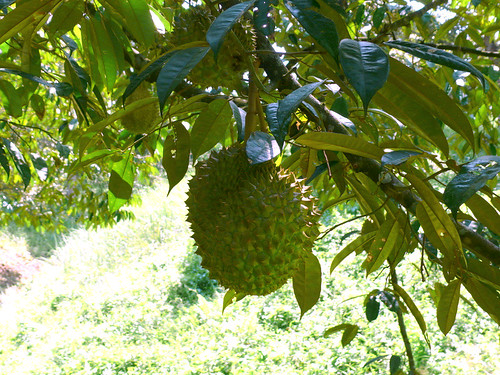 Fruits like berries have to look pretty and colorful to attract consumers but the durian is made to look menacing and smell 'odd' (although if you are a durian lover, it is heavenly) for a reason. Duri means thorns and all those thorns are needed to ward off jungle animals (and humans) who know what lies within that shell. So for those who have never eaten durians, just imagine how much better durians taste compared to berries!
Fruits like berries have to look pretty and colorful to attract consumers but the durian is made to look menacing and smell 'odd' (although if you are a durian lover, it is heavenly) for a reason. Duri means thorns and all those thorns are needed to ward off jungle animals (and humans) who know what lies within that shell. So for those who have never eaten durians, just imagine how much better durians taste compared to berries!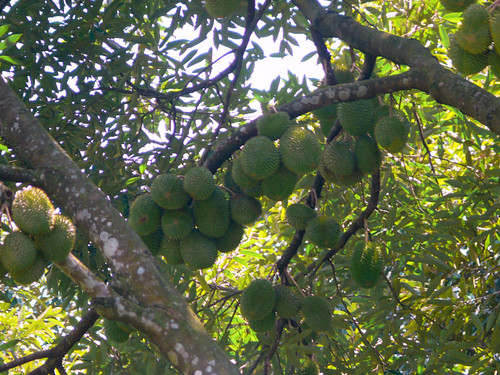 Look at that!
Look at that! Workers search for durians in ravines such as this.
Workers search for durians in ravines such as this.
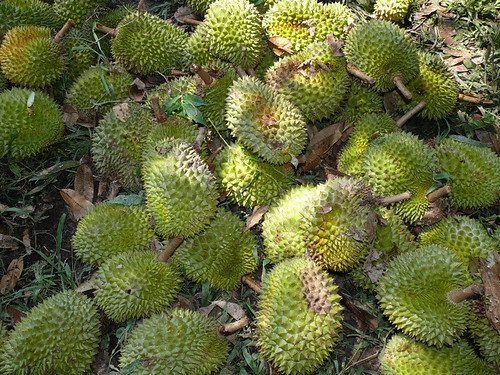
 Our pick.
Our pick. The scenery is great too.
The scenery is great too.Wey has an alternative for mace sprays, but they are kind of bulky and biodegradable:






























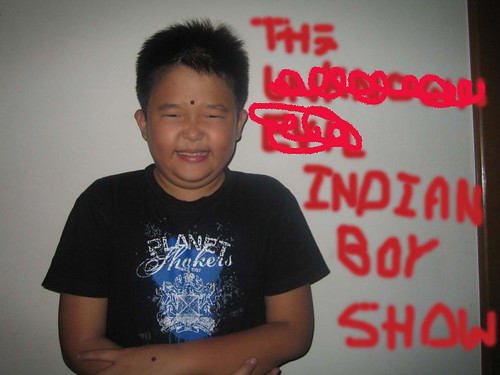
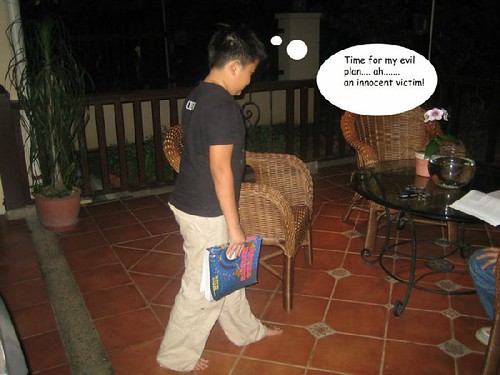


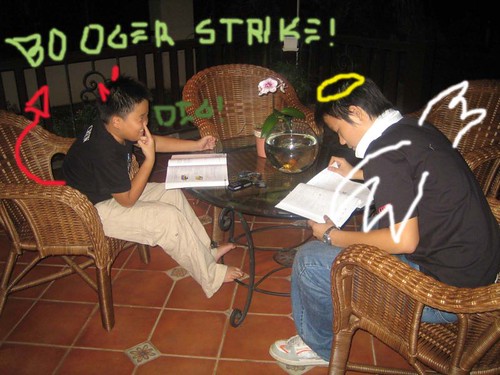
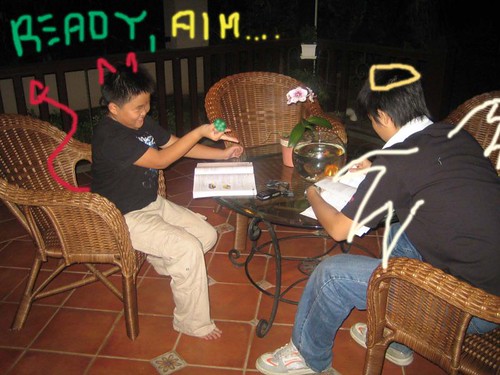
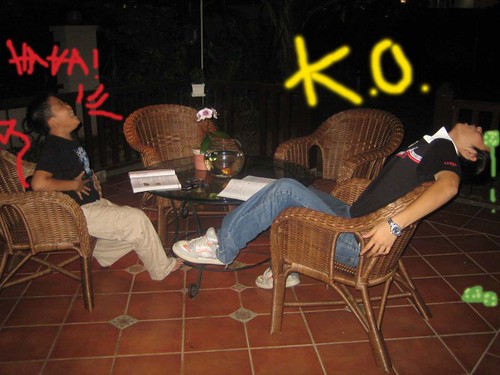





![P1070583[1]](http://farm2.static.flickr.com/1091/873676170_a4eec47fc6.jpg)

![P1070522[1]](http://farm2.static.flickr.com/1262/873649088_cf986a11b0.jpg)

![P1070619[1]](http://farm2.static.flickr.com/1197/873675668_0b302c2f79.jpg)
![P1070641[1]](http://farm2.static.flickr.com/1405/873649564_9f2ffc4627.jpg)
![P1070660[1]](http://farm2.static.flickr.com/1025/873649488_0cd9d7621c.jpg)